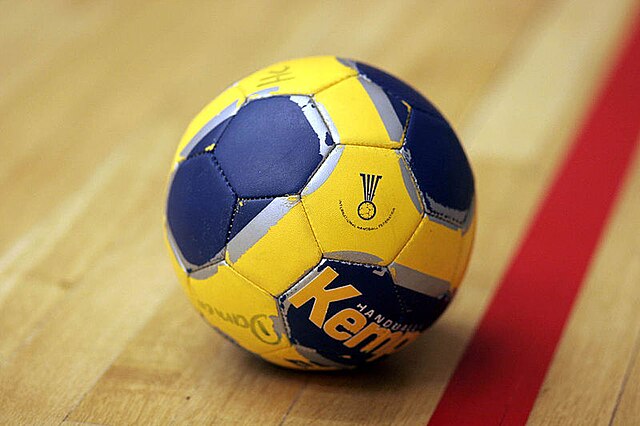A bowling ball is a hard spherical ball used to knock down bowling pins in the sport of bowling.
Lignum vitae (hardwood) balls of various diameters were used ca. 1892, in addition to larger, "regulation" balls.
A polyester ("plastic") house ball, having large, non-custom holes in a conventional grip (fingers insert to the second knuckle; thumb hole relatively close to the finger holes)
A polyurethane ("urethane") ball with a pin up layout, the mass bias indicator visible. Urethane coverstocks provide gentler, less angular hooking motion than reactive resin balls.
A reactive resin ball with a pin up layout (note green dot), the mass bias indicator visible. Reactive resin coverstocks increase hook potential.
A ball is a round object with several uses. It is used in ball games, where the play of the game follows the state of the ball as it is hit, kicked or thrown by players. Balls can also be used for simpler activities, such as catch or juggling. Balls made from hard-wearing materials are used in engineering applications to provide very low friction bearings, known as ball bearings. Black-powder weapons use stone and metal balls as projectiles.
Group of balls
Russian leather balls (Russian: мячи), 12th-13th century.
Football from association football (soccer)
Handball








